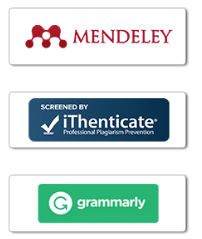DEVELOPMENT OF MATHEMATICS MODULE ON FRACTIONAL NUMBERS FOR FIFTH GRADE ELEMENTARY SCHOOL STUDENTS
DOI:
https://doi.org/10.26555/jpsd.v8i2.a25036Keywords:
Fractions, Math module, Elementary mathAbstract
In elementary mathematics learning there is fractional number material. This material has a level of difficulty that is quite challenging in learning. The concept of fractions is taught as much as possible by using more realistic and contextual concepts and minimizing abstract teaching. In abstract mathematics learning, students need tools in the form of media and teaching materials that can clarify what will be conveyed by the teacher so that students understand and understand more quickly. This study aims to (1) develop a mathematics module on fractions for elementary school students; (2) determine the feasibility of the mathematics module on the developed fraction material. This study applies a design research type of development study. The stages carried out in the design research type of development study are: (1) Preliminary research, (2) Prototyping stage, (3) Summative evaluation, and (4) Systematic reflection and documentation. The instruments used in this study were a validation questionnaire by experts and a student response questionnaire. This research has resulted in a module developed in the form of a mathematics module on fractional number material for fifth grade elementary school students to improve students' mathematical literacy which refers to the 2013 revised 2018 curriculum. The feasibility of the developed module is very feasible with an average eligibility percentage of 93.6%. The practicality of the module used is very practical with an average practicality percentage of 94.34%.
References
Ayal, C. S., Kusuma, Y. S., Sabandar, J., & Dahlan, J. A. (2016). The Enhancement of Mathematical Reasoning Ability of Junior High School Students by Applying Mind Mapping Strategy. Journal of Education and Practice, 7(25), 50–58.
Benson-O’Connor, C. D., McDaniel, C., & Carr, J. (2019). Bringing Math to Life: Provide Students Opportunities to Connect Their Lives to Math. Networks: An Online Journal for Teacher Research, 21(2), 3.
Breton, T. R. (2021). The role of national culture in student acquisition of mathematics and reading skills. Compare: A Journal of Comparative and International Education, 1–17.
Buchori, A., & Setyawati, R. D. (2015). Development learning model of charactereducation through e-comic in elementary school. International Journal of Education and Research, 3(9), 369–386.
Gray, E., Pinto, M., Pitta, D., & Tall, D. (1999). Knowledge construction and diverging thinking in elementary & advanced mathematics. Educational Studies in Mathematics, 38(1), 111–133.
Juandi, D., Kusumah, Y. S., Tamur, M., Perbowo, K. S., & Wijaya, T. T. (2021). A meta-analysis of Geogebra software decade of assisted mathematics learning: what to learn and where to go? Heliyon, 7(5), e06953.
Kenedi, A. K., Helsa, Y., Ariani, Y., Zainil, M., & Hendri, S. (2019). Mathematical Connection of Elementary School Students to Solve Mathematical Problems. Journal on Mathematics Education, 10(1), 69–80.
Lince, R. (2016). Creative thinking ability to increase student mathematical of junior high school by applying models numbered heads together. Journal of Education and Practice, 7(6), 206–212.
Moyer, P. S. (2001). Are we having fun yet? How teachers use manipulatives to teach mathematics. Educational Studies in Mathematics, 47(2), 175–197.
Özgeldi, M., & Esen, Y. (2010). Analysis of mathematical tasks in Turkish elementary school mathematics textbooks. Procedia-Social and Behavioral Sciences, 2(2), 2277–2281.
Putnam, R. T. (1992). Teaching the" hows" of mathematics for everyday life: A case study of a fifth-grade teacher. The Elementary School Journal, 93(2), 163–177.
Putnam, R. T., & Borko, H. (2000). What do new views of knowledge and thinking have to say about research on teacher learning? Educational Researcher, 29(1), 4–15.
Rahmi, U., & Helsa, Y. (2018). Integrating technology and media into mathematics learning. Journal of Physics: Conference Series, 1088(1), 12073.
Rowland, T. (2008). The purpose, design and use of examples in the teaching of elementary mathematics. Educational Studies in Mathematics, 69(2), 149–163.
Schneider, M., Grabner, R. H., & Paetsch, J. (2009). Mental number line, number line estimation, and mathematical achievement: their interrelations in grades 5 and 6. Journal of Educational Psychology, 101(2), 359.
Swadener, M., & Soedjadi, R. (1988). Values, Mathematics Education, and the Task of Developing Pupils’ Personalities: An Indonesian Perspective. In Mathematics Education and Culture (pp. 193–208). Springer Netherlands. https://doi.org/10.1007/978-94-017-2209-4_5
Utomo, G. M., Setiawan, B., Rachmadtullah, R., & Iasha, V. (2021). What Kind of Learning Media do You Want? Need Analysis On Elementary School Online Learning. Jurnal Basicedu, 5(5), 4299–4305.
Downloads
Published
Issue
Section
License
Authors who publish in JURNAL JPSD (Jurnal Pendidikan Sekolah Dasar) agree to the following terms:
- Authors retain copyright and grant the JURNAL JPSD (Jurnal Pendidikan Sekolah Dasar) right of first publication with the work simultaneously licensed under a Creative Commons Attribution License (CC BY-SA 4.0) that allows others to share (copy and redistribute the material in any medium or format) and adapt (remix, transform, and build upon the material) the work for any purpose, even commercially with an acknowledgement of the work's authorship and initial publication in JURNAL JPSD (Jurnal Pendidikan Sekolah Dasar).
- Authors are able to enter into separate, additional contractual arrangements for the non-exclusive distribution of the journal's published version of the work (e.g., post it to an institutional repository or publish it in a book), with an acknowledgement of its initial publication in JURNAL JPSD (Jurnal Pendidikan Sekolah Dasar).
- Authors are permitted and encouraged to post their work online (e.g., in institutional repositories or on their website) prior to and during the submission process, as it can lead to productive exchanges, as well as earlier and greater citation of published work (See The Effect of Open Access).
This work is licensed under a Creative Commons Attribution 4.0 International License












